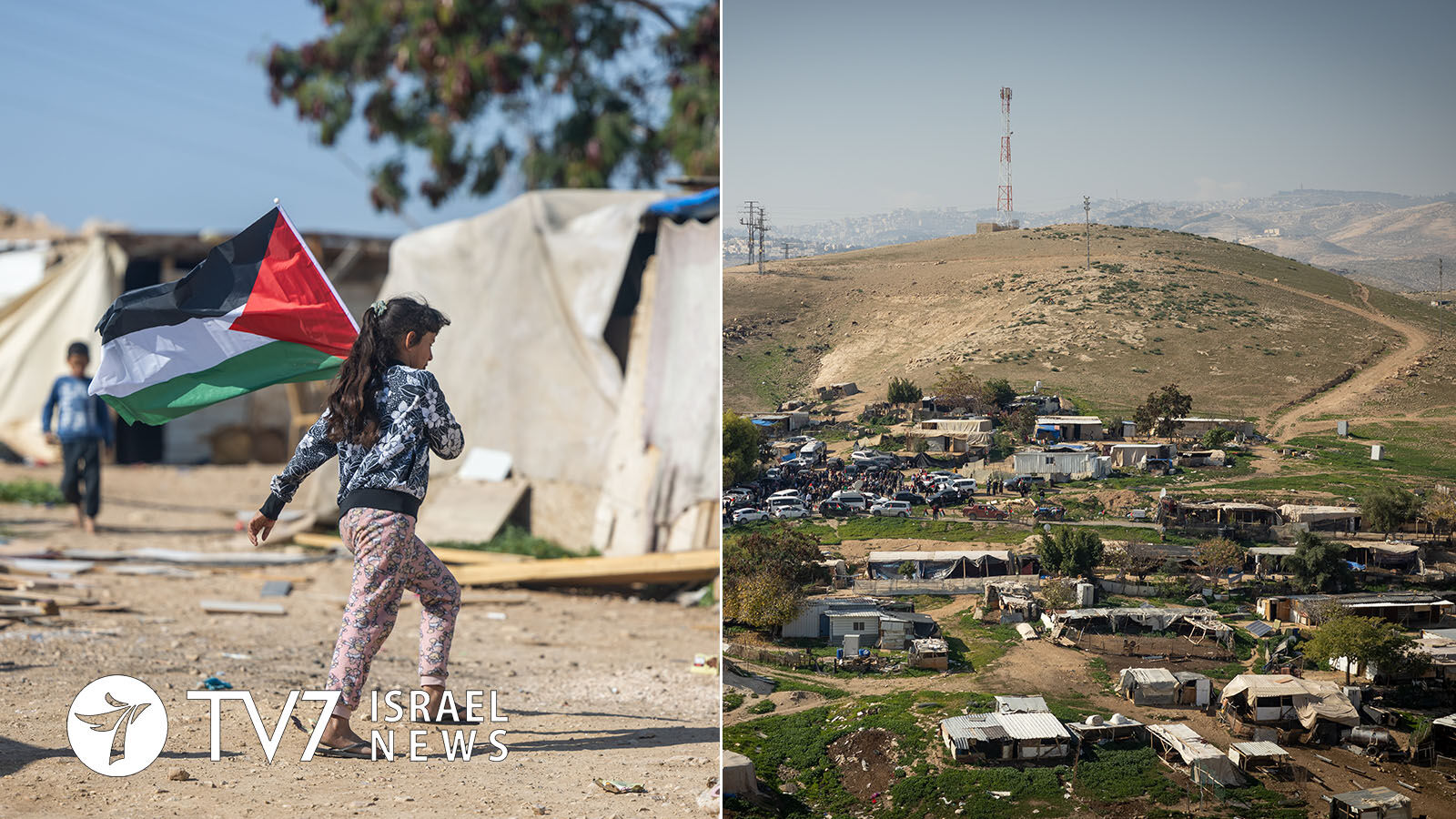There has been a years-long dispute over the illegally-built Bedouin-Palestinian encampment east of Jerusalem.
By Erin Viner
The Israeli Supreme Court ruled in 2018 to remove Khan al-Ahmar, which was built without any construction permits.
Successive governments, however, have held off from enforcing the order following international calls to refrain from compulsory evacuation of the residents.
“All the necessary permissions are on the table, including the approval of the Supreme Court of Israel, it’s just up to the Defense Minister (Yoav Gallant) and the Prime Minister (Benjamin Netanyahu) to decide,” said Yuli Edelstein, a Knesset deputy and Chairman of the Foreign Affairs and Defense Committee.
“I think the sooner the actions will be taken, the less problems it will create,” he added, urging the new Netanyahu to defy international pressure.
Edelstein made the statements alongside former Israeli Ambassador to the United Nations Danny Danon, a member of Netanyahu’s Likud party.
Israel’s far-right coalition party Otzma Yehudit has also declared that it will now push for Israel to implement the long-delayed evacuation of Khan al-Ahmar.
During the 1967 Six Day War, Israel captured parts of the West Bank and the eastern side of a then-divided Jerusalem from Jordan, as well as the Golan Heights from Syria and Gaza from Egypt. Israel cites biblical, historical and political links to Judea, Samaria and the Jordan Valley, as well as critical security interests. Nevertheless, most international countries view the building of Jewish communities on the conquered territories as “illegal settlements,” and an impediment to resolving the Israeli-Palestinian conflict.
Khan al-Ahmar has been a major hurdle in the battle over land rights in the West Bank for years.
No one was living on the land according to 1945 surveys by the British Mandatory Authorities, but apparently it became slowly populated in the 1950s while under the illegal jurisdiction of Jordan. The E1 area on which Khan al-Ahmar is located was subsequently designated in the 1970s as part of the new Israeli municipality of Ma’ale Adumim.
About 180 people are currently believed to be living in tin and wooded shacks in a ramshackle cluster, where the European Union also funds a school.
Palestinians, who say legal building permits are virtually impossible for them to obtain, allege that Israel is trying to clear the way for expanded Jewish settlements on West Bank territories they demand for a future state.
“The goal is to empty the land and give it to the settlers,” insisted Eid Jahalin, head of the Khan al-Ahmar compound.
World powers have urged Israel not to raze the illegal buildings over potential backlash that would damage efforts to resume peace negotiations with the Palestinians. The United Nations, European Parliament and International Criminal Court have claimed that such demolition would be in violation of international law, possibly even amounting to a “war crime” for breaching the Fourth Geneva Convention.
The recent election of the new Netanyahu government includes nationalist right-wing parties determined to promote the building of Jewish communities in Judea, Samaria and the Jordan Valley.
Political pressure to evacuate Khan al-Ahmar has been particularly strong since the IDF prevented a small group of Jewish activists from setting up an outpost in the West Bank.
A group of demonstrators waving Palestinian flags gathered in Khan Al-Ahmar to show support yesterday.
A similar standoff is ongoing in the West Bank area of Masafer Yatta near Hebron, which Israel declared a closed military zone in the 1980s. Jerusalem maintains the 3,000 hectares (7,400 acres) along the Israel-West Bank boundary are “highly crucial” for training purposes and that the Palestinians living there are only nomadic, seasonal dwellers.
Arab communities in this part of the South Hebron Hills traditionally lived in underground caves, but they have also started building above ground tin shacks and small rooms over the past two decades. Some 1,200 Palestinians are now estimated to reside in the area.
After scrutinizing aerial photos and excerpts from a 1985 book that both sides cited as evidence, the Supreme Court concluded last May that the residents “failed to prove their claim of permanent habitation” before the area was declared a firing zone.
The book, entitled “Life in the Caves of Mount Hebron”, was authored by Israeli anthropologist Yaacov Havakook, who spent three years studying the lives of Palestinian farmers and shepherds in Masafer Yatta.
